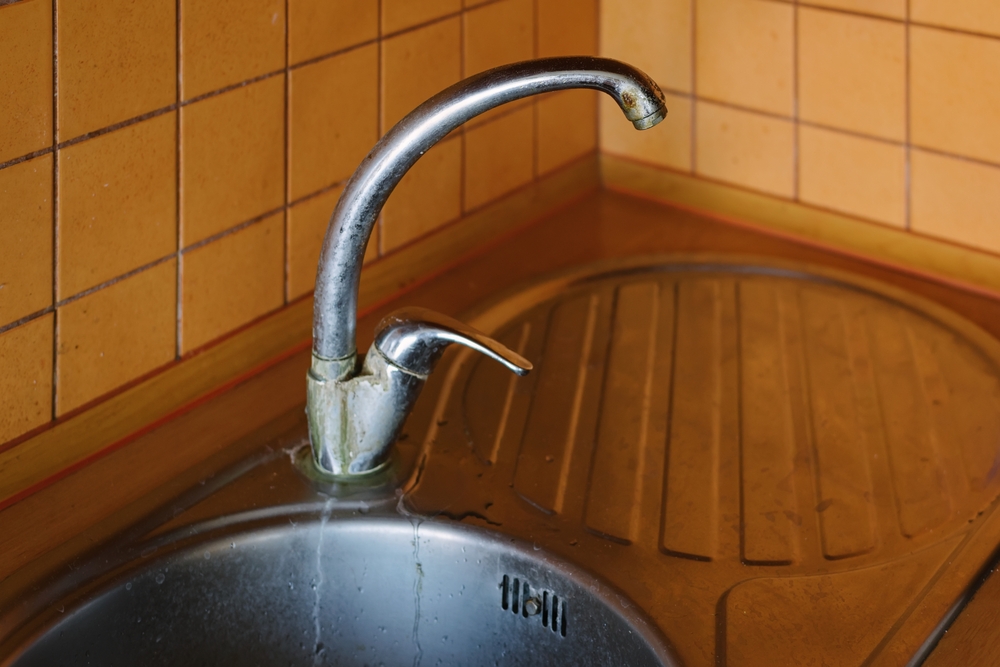Picture this: You walk into your kitchen, ready to prepare a delightful meal, and there it is—a stubborn, white, crusty buildup on your once-gleaming kitchen faucet. This unsightly intruder is lime scale, the silent destroyer of your kitchen’s aesthetic appeal and functionality. But don’t worry—by the end of this guide, you’ll be equipped with expert knowledge to banish lime scale forever and restore your faucets to their pristine condition.
Understanding Lime Scale
What is Lime Scale?
Lime scale is more than just an ugly nuisance—it’s a mineral deposit primarily composed of calcium carbonate that forms when hard water evaporates, leaving behind its mineral contents. Typically found in regions with high mineral content in water, this chalky substance can accumulate rapidly, turning your sparkling fixtures into dull, crusty eyesores.
Identifying Lime Scale
Recognizing lime scale is crucial in effective removal. Look for:
- White or grayish-white crusty deposits
- Rough, chalky texture
- Buildup around faucet aerators, spouts, and handles
- Reduced water flow from clogged fixtures
Preventive Measures
Water Treatment Solutions
Prevention is always better than cure. Consider these water treatment options:
- Water Softeners
- Remove mineral ions before water enters your home
- Initial investment: $500-$2,500
- Ongoing maintenance required
- Most comprehensive solution
- Whole-House Filtration Systems
- Multiple filtration stages
- Removes minerals and other impurities
- Price range: $300-$1,000
- Annual filter replacement needed
Routine Maintenance Techniques
- Wipe faucets dry after use
- Use microfiber cloths
- Implement weekly quick cleaning routines
- Apply protective wax or sealants periodically
Natural Removal Methods
1. Vinegar Treatment
Materials Needed:
- White vinegar
- Soft cloth
- Plastic wrap
- Rubber band
Step-by-Step Process:
- Soak a cloth in white vinegar
- Wrap the cloth around affected faucet areas
- Secure with a rubber band
- Let sit for 1-2 hours
- Remove and gently scrub
- Rinse thoroughly
Pros:
- Eco-friendly
- Inexpensive
- Safe for most surfaces
Cons:
- Slower than chemical treatments
- Might require multiple applications
2. Lemon Juice Method
Lemon juice’s high citric acid content makes it a powerful natural descaler:
Application:
- Cut lemon in half
- Rub directly on lime scale
- Let sit for 30 minutes
- Rinse and wipe dry
3. Baking Soda Solution
Create a gentle yet effective paste:
- Mix baking soda with water
- Apply to affected areas
- Let sit for 10-15 minutes
- Scrub gently with soft brush
- Rinse thoroughly
Chemical Removal Solutions
Commercial Lime Scale Removers
Top Recommended Brands:
- CLR Bath & Kitchen Cleaner
- Fast-acting
- Safe for most surfaces
- Around $5-$8 per bottle
- Lime-A-Way
- Strong formulation
- Effective on tough buildup
- Price: $4-$6
- Bar Keepers Friend
- Versatile cleaner
- Works on multiple surfaces
- Approximately $3-$5
Step-by-Step Removal Guide
Detailed Removal Process
Preparation
- Gather materials: gloves, cleaning solution, soft cloths
- Remove any decorative elements
- Protect surrounding surfaces with towels
Removal Technique
- Apply chosen cleaning solution
- Allow sufficient contact time
- Use soft-bristled brush or cloth
- Avoid aggressive scrubbing
- Rinse thoroughly with clean water
Post-Removal Care
- Dry completely with microfiber cloth
- Apply light mineral oil to protect surface
- Inspect for any remaining deposits
Maintenance and Long-Term Prevention
Cleaning Schedule
- Daily: Quick wipe with dry cloth
- Weekly: Detailed cleaning
- Monthly: Deep descaling treatment
Common Mistakes to Avoid
- Using abrasive scrubbers
- Neglecting manufacturer’s guidelines
- Leaving chemicals on surface too long
- Ignoring early signs of lime scale
Troubleshooting
Extreme Buildup Scenarios
- If natural methods fail, consider professional cleaning
- For antique or specialty faucets, consult manufacturer
- Replacement might be necessary for severely damaged fixtures
Faucet Material-Specific Tips
Stainless Steel
- Use non-abrasive cleaners
- Avoid chlorine-based products
- Polish after cleaning
Chrome
- Gentler cleaning required
- Use specialized chrome cleaners
- Avoid metal scrubbers
Bronze
- Use pH-neutral cleaners
- Wax after cleaning to protect patina
Frequently Asked Questions
Q: How often should I clean my faucets? A: Aim for weekly light cleaning and monthly deep descaling.
Q: Can lime scale damage faucets permanently? A: Yes, prolonged buildup can cause permanent etching and functionality issues.
Q: Are natural methods as effective as chemical treatments? A: For light buildup, yes. Severe cases might require commercial products.
Conclusion
Lime scale doesn’t stand a chance against your newfound expertise. By implementing these strategies, you’ll not only restore your kitchen faucets but also extend their lifespan and maintain their aesthetic appeal.

